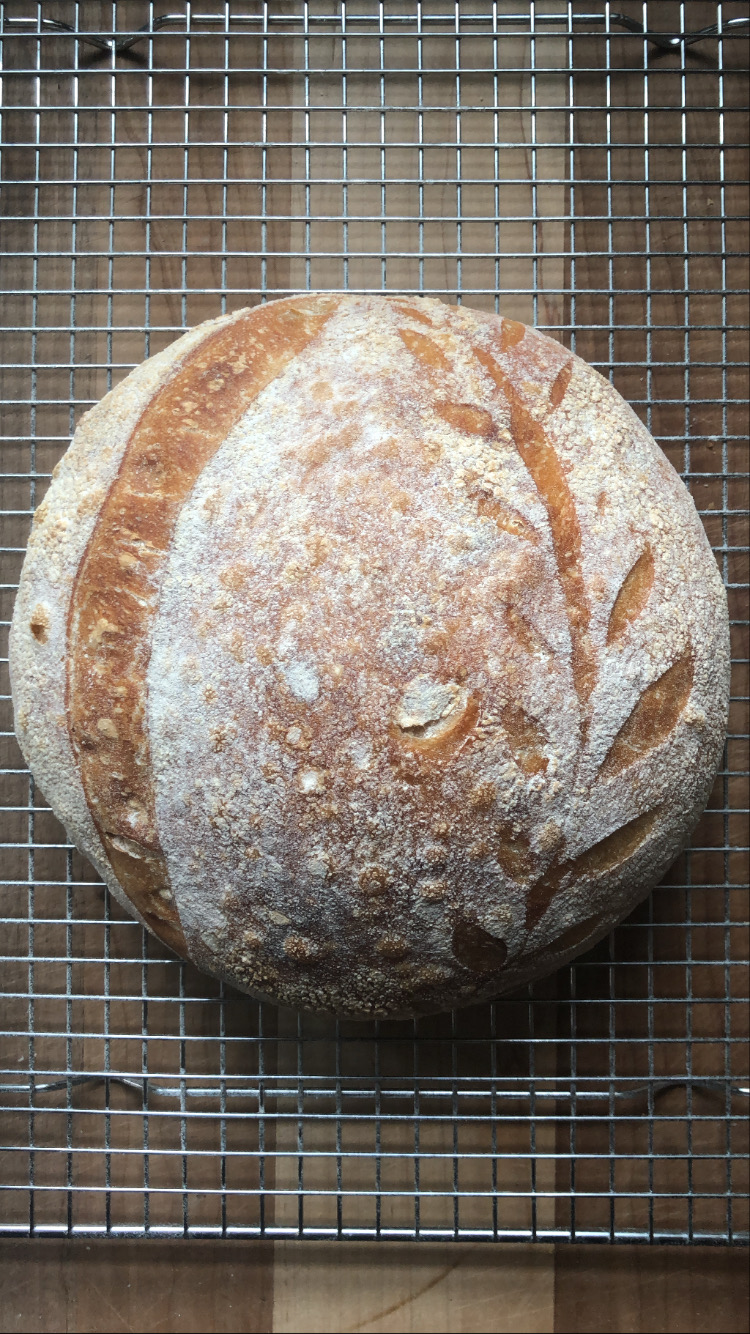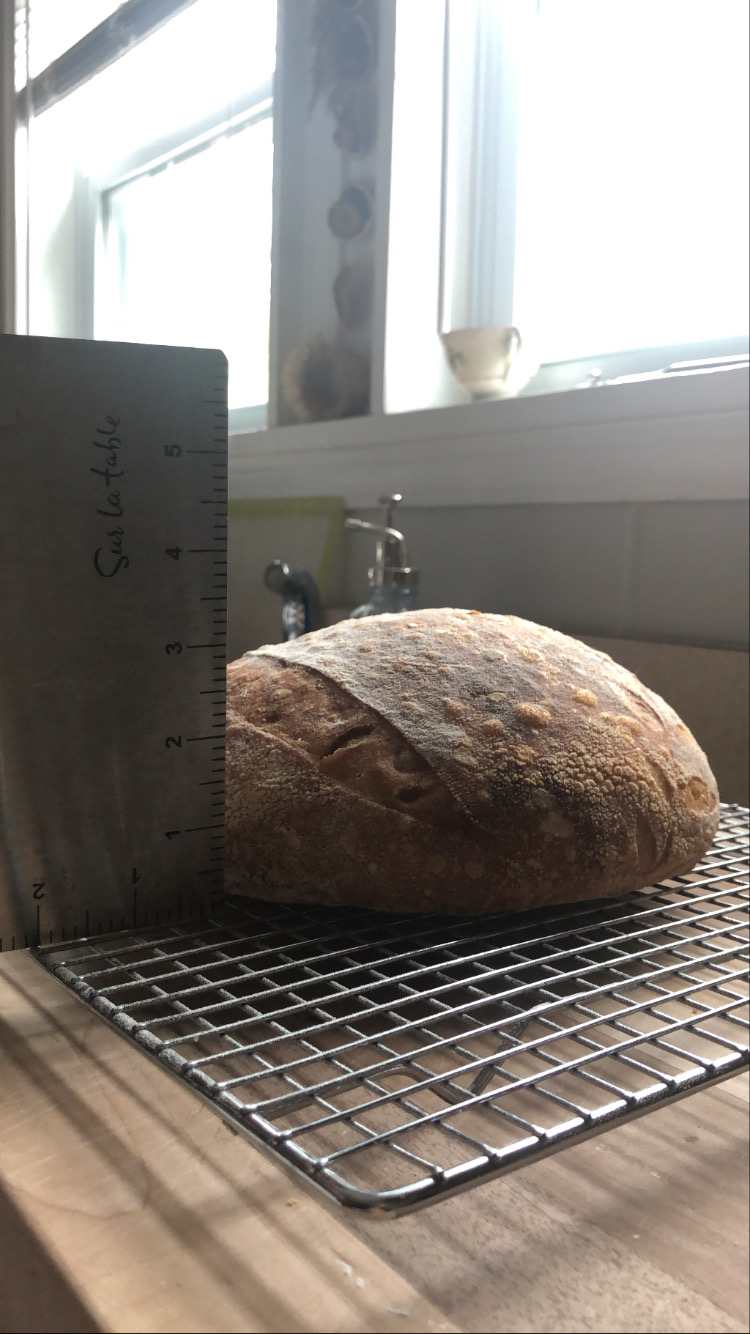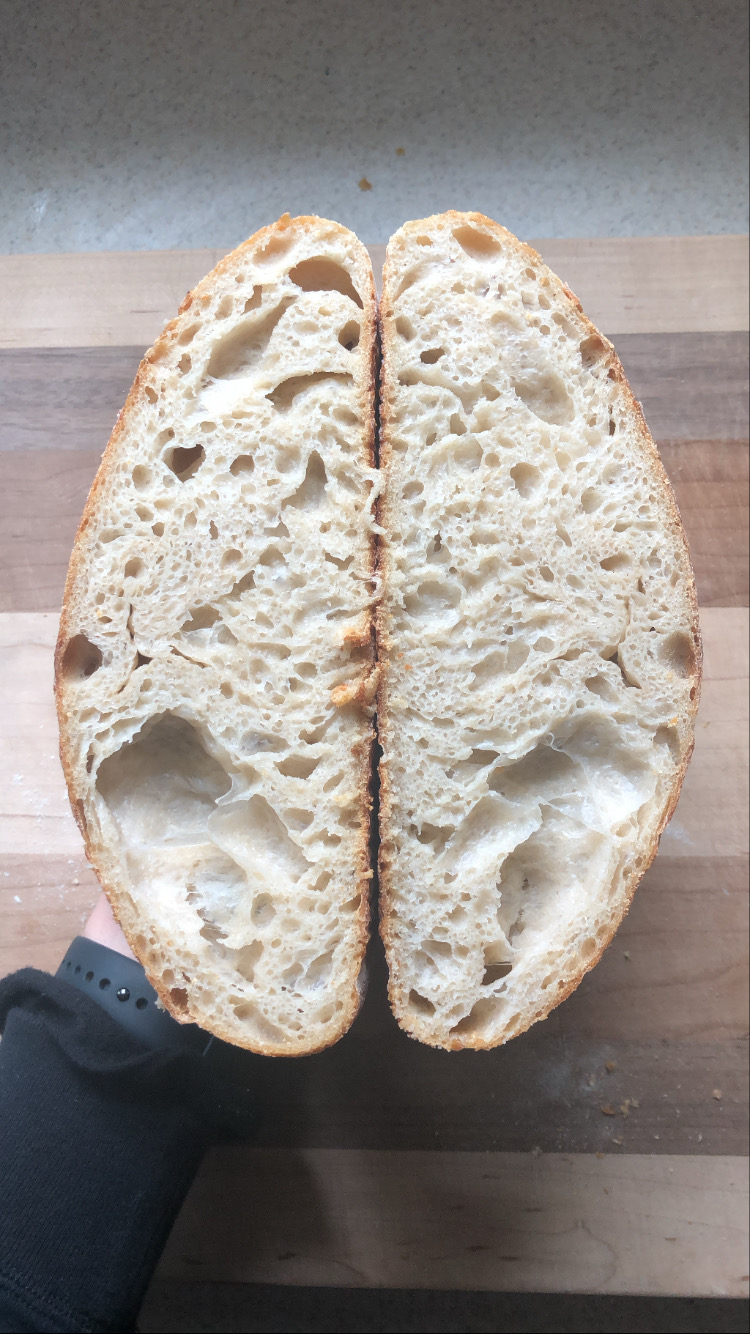In search of a more open crumb, I may have gotten a little cocky and tried a higher hydration dough (85%) with less than perfect results. My beautiful ears have completely disappeared and my oven spring was not great. The crumb is definitely more open than before but look at those weird giant holes.
What did I do? Did I overproof? Was I foolish to think I could try a high hydration loaf having only had marginal success with a 72% hydration dough?? All I want is a more open crumb why is this so hard lol.



Most probably caused by shaping. Which, with an 85% hydration dough, is very hard. You can get nicely open crumb with anything from 68%-72%. At 85% you’re really making ciabatta. Dough handling and shaping IMO is more important than hydration in achieving a nice open crumb structure.
Can you elaborate on dough handling? Like, if I’m too rough with it at the end of bulk fermentation, would that yield a denser crumb? I know judging proper fermentation has been such a challenge for me, but maybe there’s more to my dense crumbs than the fermentation... hmmmmm....
Probably caused by not sufficiently degassing the dough before shaping. Being overly rough while shaping can cause a denser loaf. Touch is a difficult thing to express in words. With time you develop a feel for dough and how gentle/rough to treat it.
Well, the ears first - you need good oven spring to get good ears, and you mention loss of spring, so loss of ears would be expected.
A suggestion - since you don't need high hydration for open crumb - stick with something workable and concentrate on proofing. That'll have more of an effect on crumb than hydration. First things first as they say. Enjoy!
Okay I’m going back to my old recipe and pushing the fermentation! Thanks for the advice.
I've been thinking on this for a few (there goes the smoke alarm again) and have an idea. And if you're up to trying something simple, you can determine how long you can ferment the materials you are using now (unfortunately it can and will change with different ingredients but when that happens you'll be ready for it).
First - fermentation - it basically starts when the starter is added and is complete when there's nothing available to keep the bugs alive and they die, or they are killed off somehow usually by baking.
As far as we are concerned, we call it done when there's still enough structure left in the dough to hold gas, shape, and expand without breaking down. Any more is considered over and detrimental to the dough. Notice there's no distinguishing between ferment and proof - that's cuz the dough doesn't care what it's called - the bugs keep on keeping on till they can't anymore.
Here's the fun part - make a dough but on a small scale - like 1/10th of your recipe. Toss it in a jar and go through the normal steps you take, including the stretch and fold (just knead a little with the fingers) fridge time, proofing - don't bother with any shaping. Now observe.
When you notice the dough losing structure (getting softer or smoother, worst would be runny) you're pushing the limit of what those materials can handle.
You might be surprised by what ya find. If you do try it report back - I might use this for others as the concept of fermentation can sometimes be confusing, and it is important. Enjoy!
So, what does making a smaller volume theoretically tell you? Is it just easier to see change when it’s smaller?
By starting small, you don't waste flour. If you like, make it a normal sized batch, doesn't really matter too much. The goal isn't how much, it's how long, and either way will give a better feel for that. Enjoy!